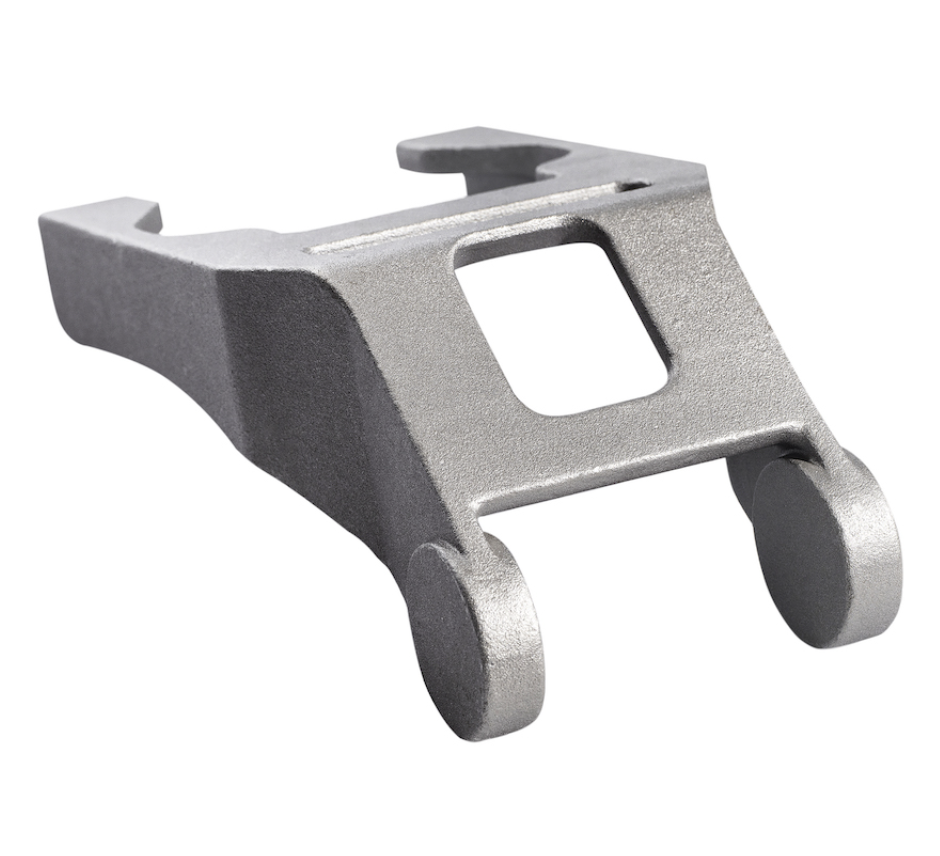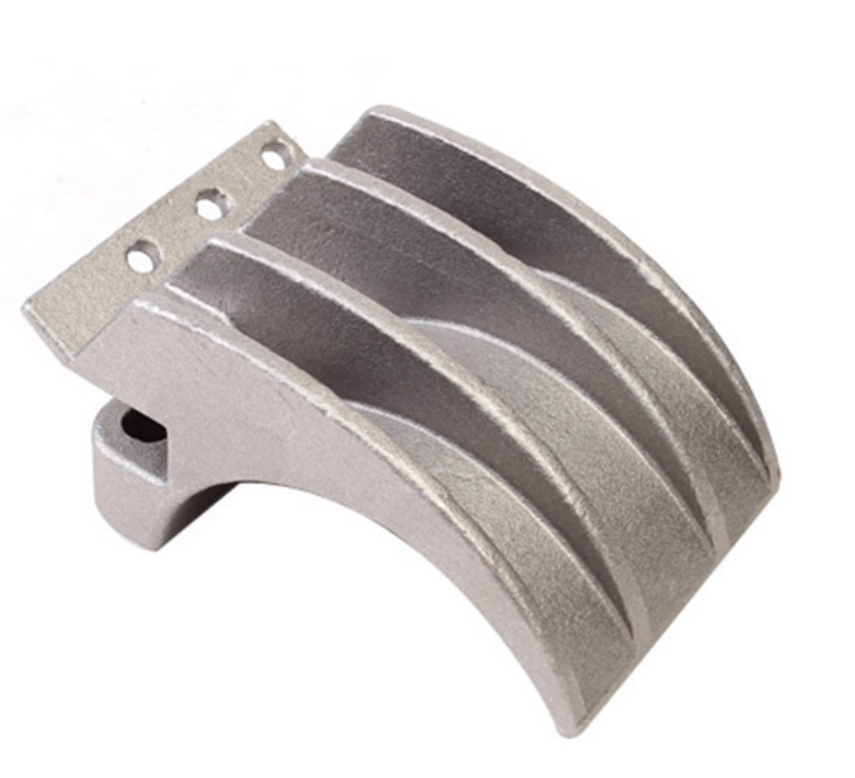Aluminium Sand Casting
Release time:2024-11-22 17:41:35 Number of views:812 Publisher:njjh Source:编辑部
Aluminium Sand Casting
Product Details ofAluminium Sand Casting Product Details ofAluminium Sand Casting Sand casting has been a technology in use for thousands of years and remains the preferred metal casting process for producing shaped parts ranging from less than one pound to several thousand pounds. Its low tool cost, versatility, and cost-effectiveness make it viable even for small batches. Virtually any part configuration feasible in other metal casting processes can be simplified into patterns and produced via sand casting. In sand casting, patterns of the desired final parts, including the metal conveying system (gates and risers), are crafted from materials such as hardwood, polyurethane, metal, or foam. A bonding material, typically sand, is packed around the pattern to maintain its shape. The pattern is then removed from the bonded sand, leaving behind a cavity in the mold shaped like the part. Molten metal is poured into this cavity and left to solidify. Subsequently, the sand is removed through a sieving process, along with other casting accessories, to reveal the finished parts. The advantages of the sand casting process. 1. Design Flexibility: Sand casting accommodates a wide range of part sizes and weights, limited only by the handling and molten metal supply capabilities. 2. Ability to Produce Complex Shapes: Sand casting enables the production of parts with intricate features that are challenging to achieve through other methods. 3. Wide Material Selection: Virtually all types of engineering alloys can be cast, provided they are meltable. 4. Cost-Effectiveness: Sand casting incurs low tool and equipment costs compared to alternative metal fabrication processes, making it one of the most economical ways to achieve near-net-shape parts. 5. Short Lead Times: Sand casting typically offers shorter lead times compared to other production methods, making it well-suited for short-run production. 6. Abundance and Affordability of Clay: Clay, a primary component in sand casting, is readily available and inexpensive. 7. Recycling Potential: Most used clay wet sand can be recycled and reused after appropriate treatment. 8. Short Mold-Making Cycle: The mold-making process is brief, resulting in high work efficiency. 9. Longevity of Molding Sand: Mixed molding sand can be reused for an extended period. 10. Tolerance to Deformation: Sand molds can withstand some deformation after pounding, which aids in drafting and core lowering processes. History of the sand casting process. 1. The foundry industry is a fundamental sector of the national economy, providing casting products for downstream industries such as automobiles, construction machinery, rail transit, mechanical equipment, thermal energy engineering, and aerospace. 2. The foundry industry can be categorized into sand casting, precision casting, die casting, etc. Sand casting, with its long history, is the foundational process of casting production, dating back thousands of years. Steel, iron, and most non-ferrous alloy castings can be obtained through sand casting, hence making it the quintessential casting method. Investment casting, also known as lost-wax casting, can be traced back over 4,000 years to ancient Egypt, China, and India. Initially used for crafting copper utensils, bells, and art, investment casting transitioned to industrial production in the 1940s. Conversely, the die-casting process emerged relatively recently. In 1838, die-casting equipment was invented to manufacture molds for movable type printing, and in 1904, the American H.H. Franklin Company pioneered the use of die-casting to produce the connecting rod support frame in automobiles, marking a pivotal moment in automotive manufacturing. Since the 1970s, spurred by the automotive industry's lightweight trend, the aluminum die-casting sector has experienced rapid growth, becoming increasingly intertwined with automotive production. 3. Castings have diverse requirements regarding material, size, shape complexity, dimensional accuracy, surface roughness, production batch size, etc. It is essential to employ the most cost-effective casting process for production. Different casting processes possess their own merits and demerits. Sand casting, precision casting, die casting, and other methods serve specific needs. While these processes do not inherently overlap in the short term, they compete within the casting field, offering various applications. As casting technologies continue to evolve and diversify, innovation will remain paramount. 4. Sand casting involves transforming raw sand into sand cores and molds using core making, molding, and related equipment to create casting molds. Molten metal is then poured into these molds, and the resulting castings are obtained after cooling, solidification, and cleaning. Sand casting stands as the foundational process in casting production, contributing over 80% of total casting output. It is projected that sand casting will remain the predominant casting production method in China for the next 10 to 20 years. Packing and Shipping. 1. Each product is meticulously packed with bubble wrap and placed in cartons to prevent scratches from impacts, which could compromise the quality and functionality of the product. For packaging and transportation, we utilize specially designed wooden boxes suitable for export. 2. We offer various transportation options to suit our customers' needs, including express, air shipping, sea shipping, and railway shipping. FAQs. 1. How can I get a quotation? ---We provide quotations based on drawings, quantity, weight, and materials. A physical sample is also acceptable for evaluation. 2. If I don't have a drawing, can you create one for me? ---Certainly, we can create a drawing based on your sample to duplicate it accurately. 3. What payment methods do you accept? ---For tooling, we require a 50% T/T advance payment, with the remaining 50% T/T balance due upon sample approval. For bulk orders, we require a 50% deposit via T/T, with the remaining 50% balance paid via T/T against the copy of the B/L. 4. What file formats can you work with? ---We can work with PDF, IGS, DWG, X_T, and STEP (STP) formats. 5. What surface treatments do you offer? ---Our surface treatments include powder coating, sandblasting, painting, polishing, acid pickling, anodizing, enamel, zinc plating, hot-dip galvanizing, and chrome plating. 6. How do you pack your products? ---Each product is meticulously packed with bubble wrap and placed in cartons. To prevent scratches from impacts during transportation, we use specially designed wooden boxes suitable for export. 7. Do you have a subsidiary overseas? ---Yes, we have a subsidiary located in Michigan, USA.
